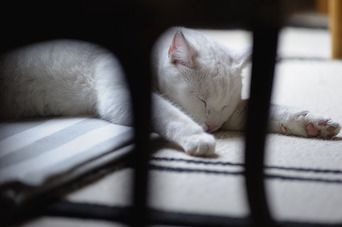Animal Hoarding: A Unique Type of Mental Disorder?
Hoarding in any form is classified scientifically as “hoarding disorder.” But a recent study examining the motivations of animal hoarders asks whether animal hoarding should be classified as a distinct type of mental disorder separate from generalized hoarding.

One of the worst forms of animal cruelty—hoarding—affects an estimated 250,000 animals per year. While it’s impossible to pinpoint exactly why people hoard animals, a new study in the journal Psychiatry Research suggests that the motivation behind animal hoarding is distinct from that for object hoarding and thus animal hoarding should be classified as a distinct type of mental disorder.
Initially, hoarding in all its forms was listed in the Diagnostic and Statistical Manual of Mental Disorders (DSM) as a subtype of obsessive-compulsive disorder (OCD). After hoarding became more understood, it was reclassified in 2013 as its own type of mental disorder, with animal hoarding as a subtype.
But after studying animal hoarding for her master’s thesis at the Pontifical Catholic University of Rio Grande do Sul in Porto Alegre, Brazil, doctoral student Elisa Arrienti Ferreira thought animal hoarding might also need reclassification, largely because the treatment for the 2 compulsions may be different.
RELATED:
- Veterinary Immunity and Animal Cruelty Law Passed
- New Research May Help Veterinarians Distinguish Between Accidental Injury and Animal Abuse
​​​​​​​For their research, Ferreira and her colleagues visited the homes of 33 adult animal hoarders in Porto Alegre to interview them and assess their environment. Each hoarder had about 41 animals on average—dogs and cats were the most prevalent with a few duck hoarders.
Demographics
Of the people Ferreira and her team interviewed, 75% were low income, 88% were unmarried, and 64% were elderly—all of which is consistent with generalized hoarding disorder. However, 73% of those interviewed were women. By contrast, the DSM notes that generalized hoarding disorder affects both men and women equally.
Other Differences
The biggest difference had to do with their motivations for hoarding. “[Animal hoarders] think they are like missionaries, that they are saving these [animals’] lives … and that they are the only ones who can care for them,” Ferreira said. “When you speak to someone who is hoarding objects, they don’t say things like that. Instead, they say they are keeping things because they think they might need them someday.”
Another characteristic also not shared with hoarding disorder as a whole is that animal hoarders tend to start housing animals after a personal trauma or disaster, such as the death of a loved one or loss of a job.
“Animal hoarders have poor or no insight on their condition,” Ferreira said, noting that the animals are typically found in very poor living conditions—they may be sick, injuered or starving—but the hoarders do not see it that way and are suspicious of any help that is offered.
A final major difference between animal and object hoarding is what happens when the hoarding is stopped. Animal hoarders “have to think about where [the animals] will go” if their disorder is to be dealt with. Removing, rehoming and, possibly, euthanizing these animals is a much more intensely emotional process than removing hoarded objects from the home.
More Study Needed
“I think the arguments are interesting, but I don’t think they justify considering [animal hoarding] distinct just yet,” said Graham Thew, a clinical psychologist who studies hoarding behavior at the University of Oxford in the United Kingdom.
While animal hoarding may still be only a subtype of generalized hoarding disorder, the affectionate bond with their animals and motivations behind collecting their animals could mean animal hoarding is its own type of mental disorder.